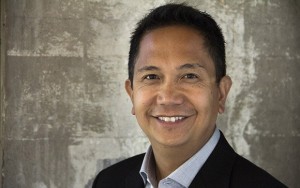EUGENE, Oregon – The university has named Emmy-award winning journalist and former New York Times multimedia editor Andrew DeVigal the inaugural Chair of Journalism Innovation and Civic Engagement and the first professor of practice in the School of Journalism and Communication (SOJC).
DeVigal’s role as chair and professor of practice will begin in September. The new chair position and the center are funded through a $5 million gift from an anonymous donor, with $2 million for the faculty chair and $3 million toward the $25-million dollar endowment goal for the center.
“We are absolutely delighted to welcome Andrew DeVigal to our distinguished faculty,” said Julianne Newton, interim Edwin L. Artzt dean of the SOJC. “This groundbreaking journalist brings extraordinary talent and expertise to his new role as the chair of journalism innovation and civic engagement.”
“We selected Andrew because of his dynamic history of developing innovative, award-winning journalistic projects for national and global communities,” Newton continued.
Based at the George S. Turnbull Portland Center, the Center for Journalism Innovation and Civic Engagement will link journalism school’s programs in both Portland and Eugene. Aside from academic and academic tasks, the center will work with non-traditional resources from across country and globally on new programs and projects that advance public interest journalism, communication and the student experience.
“I was drawn to this position for the opportunity to collaborate with the world-class faculty at the University of Oregon and help forge the future of journalism in the service of civic engagement,” said DeVigal.
As a professor of practice, DeVigal is one of a small number of academic, business and government leaders who have made major contributions to the university’s efforts to enhance student success and intitutional achievements.
“Journalism education plays a pivotal role in how journalism must evolve,” said DeVigal, “where learning from our successes and failures is expected and honored.”
DeVigal most recently served as the creative director of content strategy at Second Story, a media company focused on innovative storytelling and interactive experiences.
“In the last few years, the media industry has mostly been focused around being digital or mobile first. The center needs to focus on being community first,” DeVigal stated.
“It can be the global hub that meets the need to evolve and embrace the space between traditional news media and unfiltered social media through practices and research,” he continued.
Prior to working at Second Story, DeVigal served as the multimedia editor at The New York Times, where he guided the newspaper’s print-driven format into the multimedia era. He integrated new approaches to interactive storytelling with The Times’ long tradition of journalistic excellence to help shape the industry with techniques still in use today.
Among the projects his department led at The New York Times was “One in 8 Million,” a collection of 54 audio stories from the interesting characters who inhabit New York’s five boroughs. The project won the Times its first Emmy Award in 2010, for the Times website’s new approaches to news and documentary programming/His department also won the Times’ second Emmy for “A Year at War.”
DeVigal’s previous academic experience includes a 2011-12 Punch Sulzberger Executive Leadership Fellowship at Columbia University. From 1996 to 2004 he was a fellow with the Poynter Institute, where he also was a research associate and co-program director for the 2000 Stanford-Poynter EyeTrack Research Project studying online news site consumers. DeVigal was an associate professor in the San Francisco State University Department of Journalism from 2002-06.
“My career has revolved around stories, bridge building, interactivity and engagement,” said DeVigal. “With my experience in the news and media industries, as well as academia, I have worked to effectively conceive, innovate and direct initiatives and projects.
